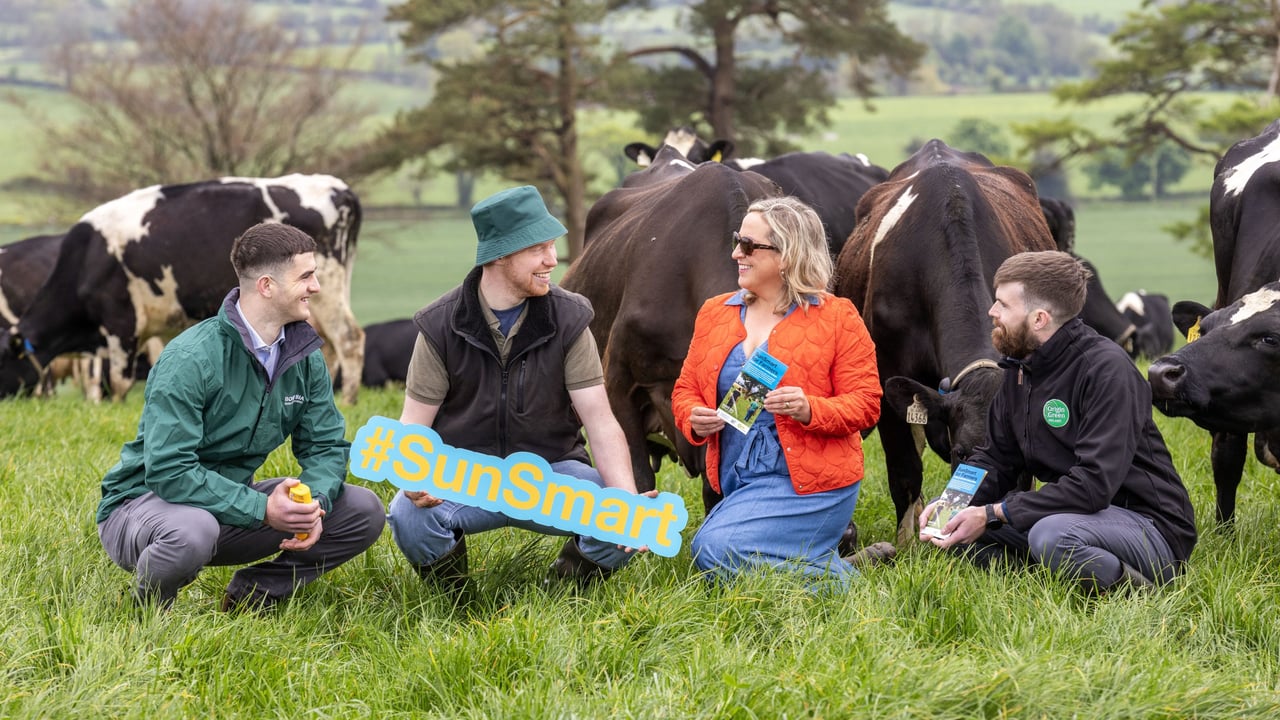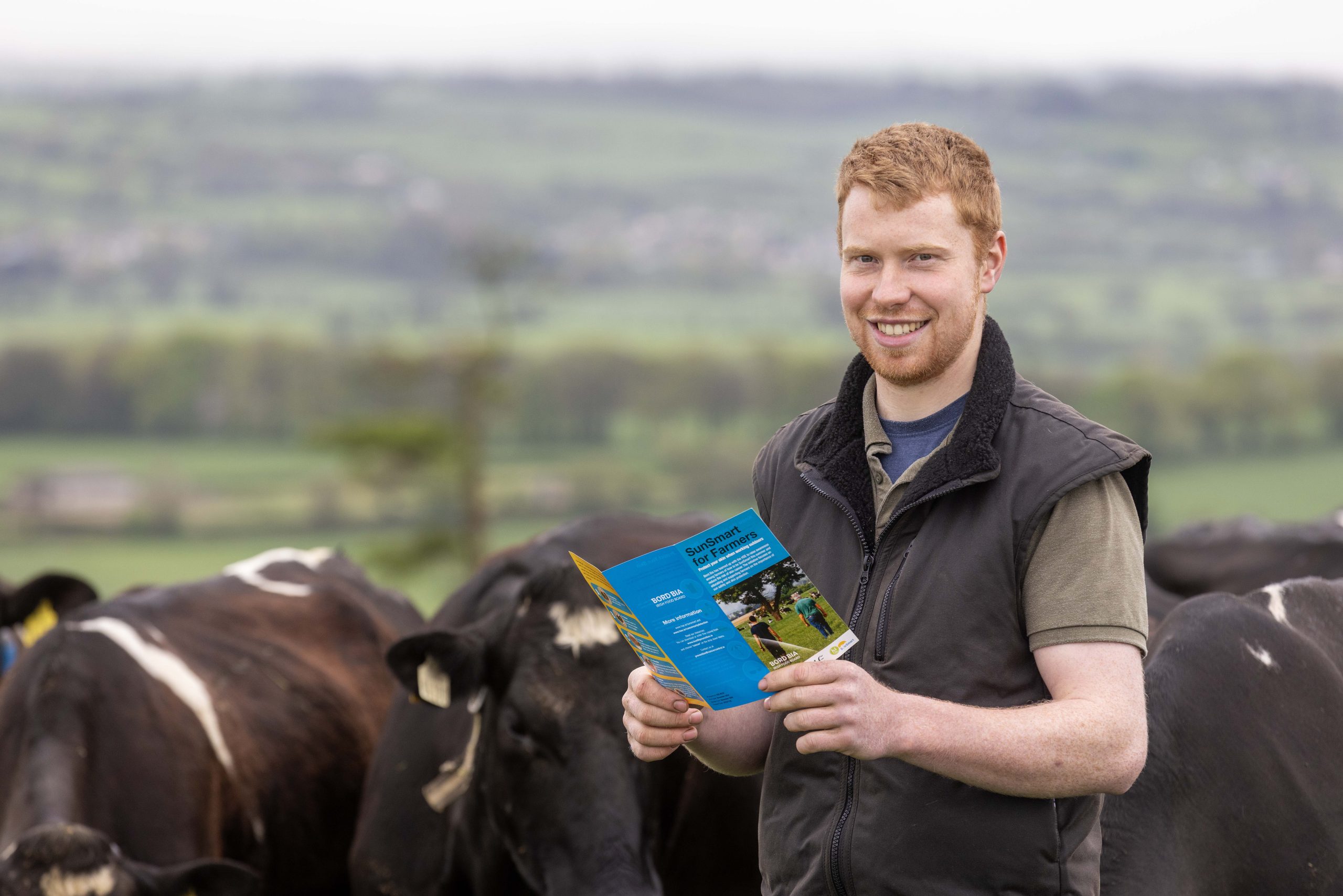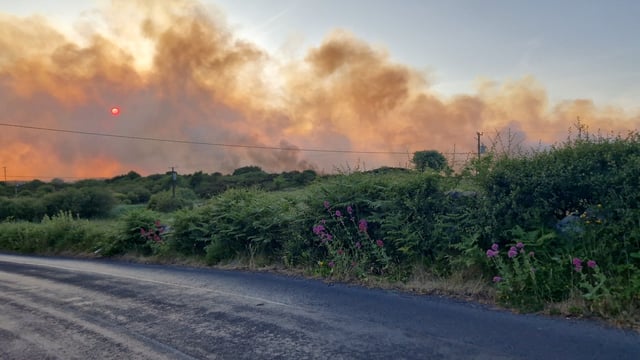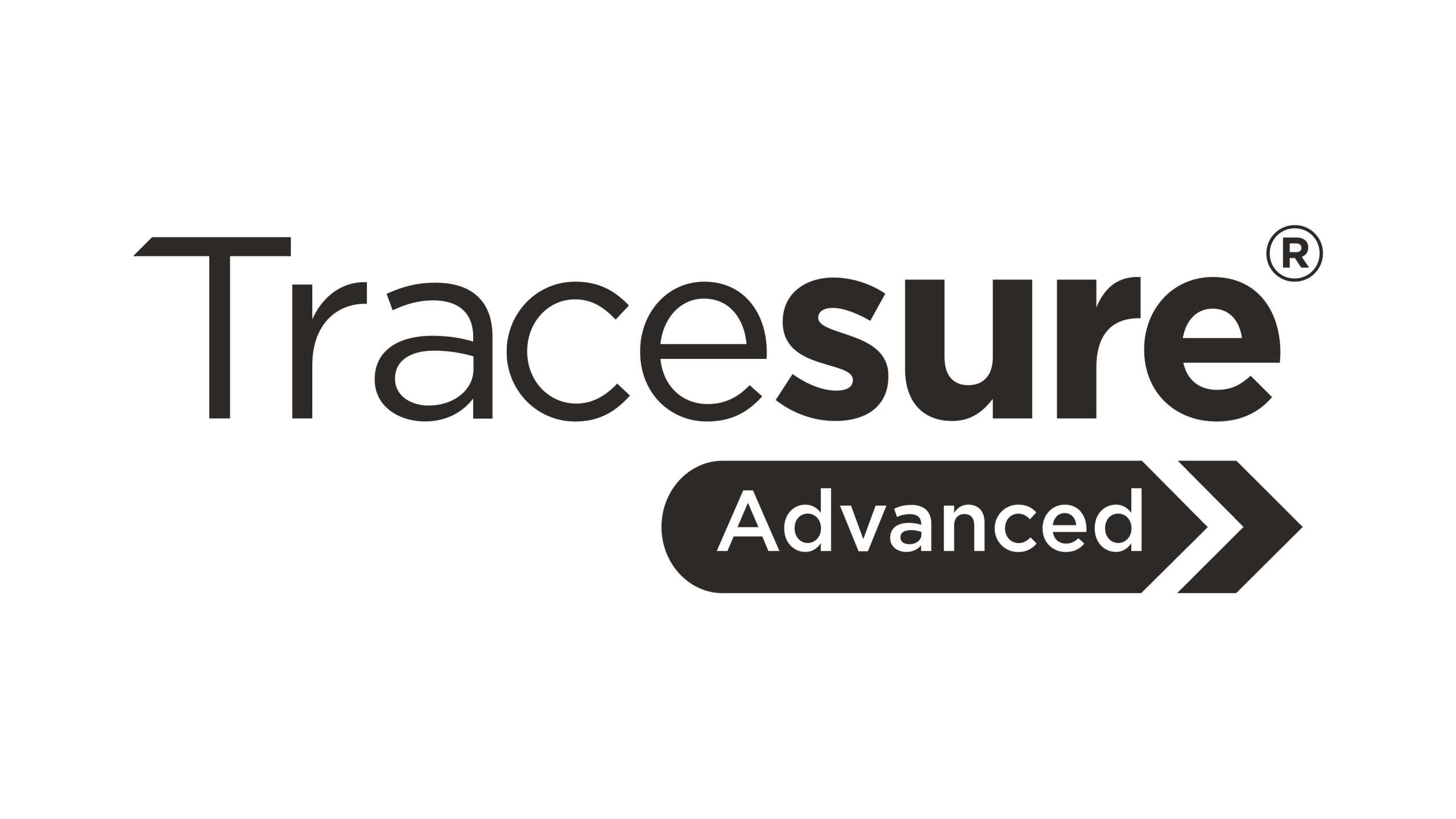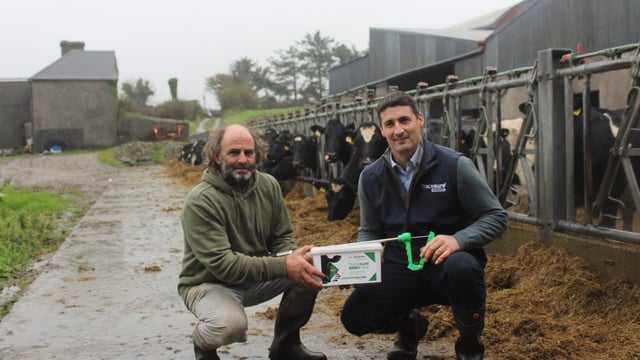Campaign to promote skin cancer awareness among farmers
Bord Bia has today (Thursday, May 1) launched a campaign to raise awareness around skin cancer among farmers.
The initiative, in partnership with the HSE’s National Cancer Control Programme (NCCP) and Healthy Ireland, will run throughout the summer to encourage farmers to protect their skin while working outdoors.
Up to August 31, 2025, Bord Bia auditors will distribute SunSmart for Farmers leaflets to all beef, dairy, and sheep farmers during their Bord Bia audit.
With approximately 780 farms visited weekly by Bord Bia auditors, the campaign will reach over 12,000 farmers during the peak UV exposure season.
Campaign
Commenting on the campaign, Eoghan Geraghty, agricultural sustainability co-ordinator with Bord Bia said that the Irish Food Agency is leveraging its access to the Irish farming community to support the HSE and Healthy Ireland's annual SunSmart campaign.
"Over the summer months, Bord Bia auditors will encourage farmers to take and read the SunSmart for Farmers leaflet.
"Through this simple step, we hope to prompt farmers to better protect their skin from the sun every day, whether out in the field, inside the tractor cab, or on a cloudy day," he said.
Ann-Marie Lawlor, senior health promotion and improvement officer with the HSE, added that skin cancer is the most common form of cancer in Ireland, with those working outdoors particularly at risk.
"Farmers and other outdoor workers receive two to three times more UV radiation than those working indoors, making them more vulnerable to skin cancer.
"Through this joint initiative with Bord Bia, we’re placing life-saving advice directly in farmers’ hands. Small protective habits today can make a big difference for long-term health," she said.
Skin cancer
The SunSmart for Farmers leaflet outlines clear, actionable steps that farmers can take to protect themselves from sun damage, including checking their skin and moles regularly for changes.
The leaflet features the 'ABCDE' checklist to help farmers know when a mole or patch of skin might be melanoma skin cancer:
- A = Asymmetry: when one half of the mole is not the same as the other.;
- B = Border: The edges of the mole are irregular, blurry or jagged;
- C = Colour: The mole is uneven in colour. It might have different shades of black, brown, and pink in it;
- D = Diameter: This refers to the size of the mole. Melanomas may grow more than 6mm, which is the width of a pencil;
- E = Evolution. This means that the mole is changing. The mole may change in size, shape, or colour. It may also start to itch or bleed. Normal moles usually stay the same size, shape, and colour.
Over 11,000 cases of skin cancer are detected in Ireland annually, with many of those being preventable.
Farmers are also advised to follow the "SunSmart 5S" rule:
- Slip on clothing that covers your skin such as long-sleeved tops and collared t-shirts;
- Slop on broad-spectrum sunscreen with a minimum SPF of 30+ for adults and 50+ for children, which has a high UVA protection and is water resistant. Apply 20 minutes before going outside and reapply every two hours, or more often if sweating;
- Slap on a wide brimmed hat to protect your face, ears, and neck;
- Seek shade, especially if outdoors between 11:00a.m to 3:00p.m when UV rays are at their strongest. Plan your work outdoors early in the morning or late afternoon to avoid the peak UV sunrays. Use trees or portable shade for breaktimes and lunch;
- Slide on sunglasses to protect your eyes.

